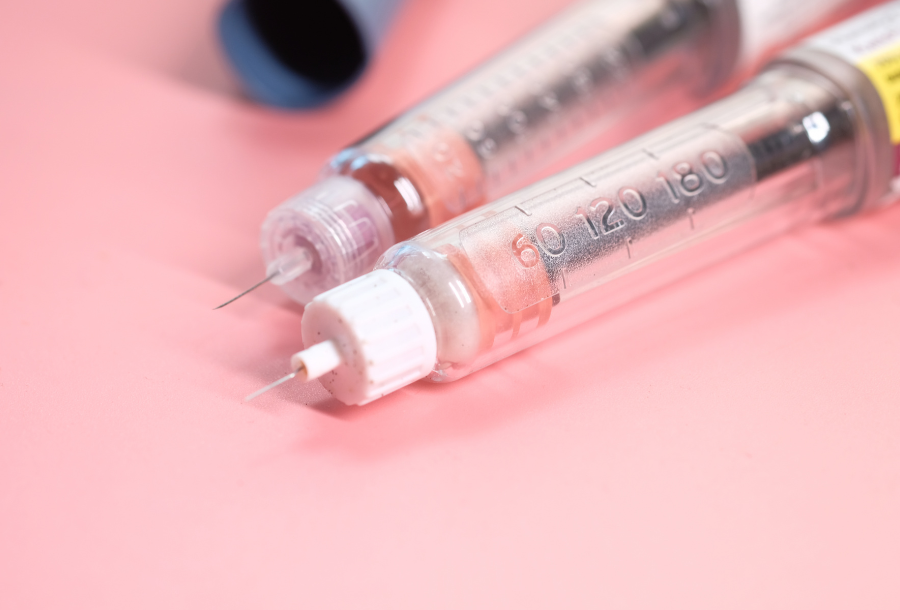
Aerobic and anaerobic exercise for blood sugar control
October 14, 2022
Discover the differences between aerobic and anaerobic exercise, the unique benefits, and how combining them can help maintain normal blood sugar levels and improve overall health.
Key takeaways
- Aerobic exercise involves using large muscle groups for an extended period, while anaerobic exercise consists of short, intense bursts
- Both forms of exercise can improve cardiovascular health, decrease insulin resistance, and help maintain normal blood sugar levels
Physical fitness is a key part of living a healthy lifestyle. Incorporating both aerobic and anaerobic exercises into your workout routine can lead to a plethora of benefits for your overall well being. In this article, we'll explore the differences between these two types of exercise, their unique advantages, and their impact on blood sugar levels.
What is aerobic exercise?
Aerobic exercise refers to any physical activity that requires the use of your body's large muscle groups for an extended period. This type of exercise relies on aerobic metabolism, which is the process by which your muscles utilise oxygen provided by your cardiorespiratory system.
When you engage in aerobic activities, your breathing and heart rate increase, enabling your heart to deliver oxygen-rich blood to your muscles and help them produce the energy your body needs to function at its best. Examples of aerobic exercise include cycling, running, jogging, hiking, swimming, rowing, walking, jumping rope and dancing.
Benefits of aerobic exercise include:
- Improved cardiovascular health
- Better blood sugar control
- Weight management
- Increased endurance
- Improved mood and mental health
- Better sleep quality
What is anaerobic exercise?
Anaerobic exercise involves short bursts of intense activity that rely on energy stored in your muscles, rather than oxygen. This type of exercise is characterised by high-intensity training that pushes your body's limits, resulting in the production of lactic acid as a byproduct of energy metabolism. Anaerobic exercise examples include high-intensity interval training (HIIT), sprint training, weightlifting, and plyometrics.
Benefits of anaerobic workouts include:
- Increased muscle strength and power
- Improved glucose control
- Better athletic performance
- Increased lactic acid threshold
- Improved bone density
- Improved cardiovascular health
Aerobic vs anaerobic exercise: which one is better for blood sugar levels?
There is no definitive answer to which type of exercise, aerobic or anaerobic, is universally better for blood sugar levels. The ideal choice depends on individual factors such as fitness level, health goals, individual exercise preferences and specific medical conditions like diabetes.
Aerobic exercise typically involves moderate-intensity, longer-duration activities that rely on the body's ability to use oxygen to produce energy. This type of exercise can help improve insulin sensitivity, lower blood sugar levels, and decrease the risk of diabetes-related complications. However, it may also increase the likelihood of hypoglycemia (low glucose levels) during and after exercise, particularly in individuals with diabetes who take insulin or other glucose-lowering medications.
Anaerobic exercise, on the other hand, consists of short bursts of high-intensity exercise that rely on energy stored in the muscles. This type of exercise can also improve insulin sensitivity and blood sugar regulation, but it may initially cause a temporary increase in blood glucose levels due to adrenaline release. This spike is typically followed by a decrease in glucose levels several hours after the exercise session.
In general, both aerobic and anaerobic exercises can be beneficial for blood sugar control and overall metabolic health. For most individuals, a combination of both types of exercise is likely to be the most effective approach, as it allows for a diverse range of health benefits, including improved cardiovascular health, increased muscle strength, and better blood sugar management.
However, it is essential to consult with a healthcare professional, particularly for those with diabetes or other medical conditions that may impact blood sugar levels, before starting a new exercise program.
How much exercise should I be doing?
The latest Harvard exercise guidelines recommend that healthy adults engage in 150 to 300 minutes of weekly moderate-intensity aerobic activity or 75 to 150 minutes of weekly vigorous exercise, or a combination of both. Resistance exercise training to build muscle is also advised twice per week, along with incorporating physical fitness into daily habits.
When incorporating aerobic and anaerobic activity into your fitness routine, it's crucial to gradually increase the intensity and duration of your workouts. This approach allows your body to adapt and prevents potential injury and burnout caused by engaging in intense activities without proper conditioning. So if you're just getting started with regular exercise, take it slow.
A balanced fitness routine can help with maintaining normal blood sugar levels. Remember, the best exercise plan is the one that you enjoy and can sustain over time. Before starting any new exercise program, consult with your healthcare provider, especially if you have a health condition that may limit your exercise capacity. They can offer guidance tailored to your specific needs.
Additionally, consider using a continuous glucose monitoring (CGM) device to track your glucose levels and achieve optimal metabolic health with Vively. Vively is an app that combines CGMs with personalised support and education to help you reach your health goals.
Meet our team.
Subscribe to our newsletter & join a community of 20,000+ Aussies
Get access to limited content drops, free invites to expert fireside chats, and exclusive offers.

Aerobic and anaerobic exercise for blood sugar control
Discover the differences between aerobic and anaerobic exercise, the unique benefits, and how combining them can help maintain normal blood sugar levels and improve overall health.
Key takeaways
- Aerobic exercise involves using large muscle groups for an extended period, while anaerobic exercise consists of short, intense bursts
- Both forms of exercise can improve cardiovascular health, decrease insulin resistance, and help maintain normal blood sugar levels
Physical fitness is a key part of living a healthy lifestyle. Incorporating both aerobic and anaerobic exercises into your workout routine can lead to a plethora of benefits for your overall well being. In this article, we'll explore the differences between these two types of exercise, their unique advantages, and their impact on blood sugar levels.
What is aerobic exercise?
Aerobic exercise refers to any physical activity that requires the use of your body's large muscle groups for an extended period. This type of exercise relies on aerobic metabolism, which is the process by which your muscles utilise oxygen provided by your cardiorespiratory system.
When you engage in aerobic activities, your breathing and heart rate increase, enabling your heart to deliver oxygen-rich blood to your muscles and help them produce the energy your body needs to function at its best. Examples of aerobic exercise include cycling, running, jogging, hiking, swimming, rowing, walking, jumping rope and dancing.
Benefits of aerobic exercise include:
- Improved cardiovascular health
- Better blood sugar control
- Weight management
- Increased endurance
- Improved mood and mental health
- Better sleep quality
What is anaerobic exercise?
Anaerobic exercise involves short bursts of intense activity that rely on energy stored in your muscles, rather than oxygen. This type of exercise is characterised by high-intensity training that pushes your body's limits, resulting in the production of lactic acid as a byproduct of energy metabolism. Anaerobic exercise examples include high-intensity interval training (HIIT), sprint training, weightlifting, and plyometrics.
Benefits of anaerobic workouts include:
- Increased muscle strength and power
- Improved glucose control
- Better athletic performance
- Increased lactic acid threshold
- Improved bone density
- Improved cardiovascular health
Aerobic vs anaerobic exercise: which one is better for blood sugar levels?
There is no definitive answer to which type of exercise, aerobic or anaerobic, is universally better for blood sugar levels. The ideal choice depends on individual factors such as fitness level, health goals, individual exercise preferences and specific medical conditions like diabetes.
Aerobic exercise typically involves moderate-intensity, longer-duration activities that rely on the body's ability to use oxygen to produce energy. This type of exercise can help improve insulin sensitivity, lower blood sugar levels, and decrease the risk of diabetes-related complications. However, it may also increase the likelihood of hypoglycemia (low glucose levels) during and after exercise, particularly in individuals with diabetes who take insulin or other glucose-lowering medications.
Anaerobic exercise, on the other hand, consists of short bursts of high-intensity exercise that rely on energy stored in the muscles. This type of exercise can also improve insulin sensitivity and blood sugar regulation, but it may initially cause a temporary increase in blood glucose levels due to adrenaline release. This spike is typically followed by a decrease in glucose levels several hours after the exercise session.
In general, both aerobic and anaerobic exercises can be beneficial for blood sugar control and overall metabolic health. For most individuals, a combination of both types of exercise is likely to be the most effective approach, as it allows for a diverse range of health benefits, including improved cardiovascular health, increased muscle strength, and better blood sugar management.
However, it is essential to consult with a healthcare professional, particularly for those with diabetes or other medical conditions that may impact blood sugar levels, before starting a new exercise program.
How much exercise should I be doing?
The latest Harvard exercise guidelines recommend that healthy adults engage in 150 to 300 minutes of weekly moderate-intensity aerobic activity or 75 to 150 minutes of weekly vigorous exercise, or a combination of both. Resistance exercise training to build muscle is also advised twice per week, along with incorporating physical fitness into daily habits.
When incorporating aerobic and anaerobic activity into your fitness routine, it's crucial to gradually increase the intensity and duration of your workouts. This approach allows your body to adapt and prevents potential injury and burnout caused by engaging in intense activities without proper conditioning. So if you're just getting started with regular exercise, take it slow.
A balanced fitness routine can help with maintaining normal blood sugar levels. Remember, the best exercise plan is the one that you enjoy and can sustain over time. Before starting any new exercise program, consult with your healthcare provider, especially if you have a health condition that may limit your exercise capacity. They can offer guidance tailored to your specific needs.
Additionally, consider using a continuous glucose monitoring (CGM) device to track your glucose levels and achieve optimal metabolic health with Vively. Vively is an app that combines CGMs with personalised support and education to help you reach your health goals.
Get irrefutable data about your diet and lifestyle by using your own glucose data with Vively’s CGM Program. We’re currently offering a 20% discount for our annual plan. Sign up here.
Next articles

Understanding the causes of insulin resistance
Unravel the mystery of insulin resistance, its causes and implications for your health. Explore evidence-based strategies to prevent and manage this condition and optimise your metabolic health.



 Share
Share Tweet
Tweet Share
Share















